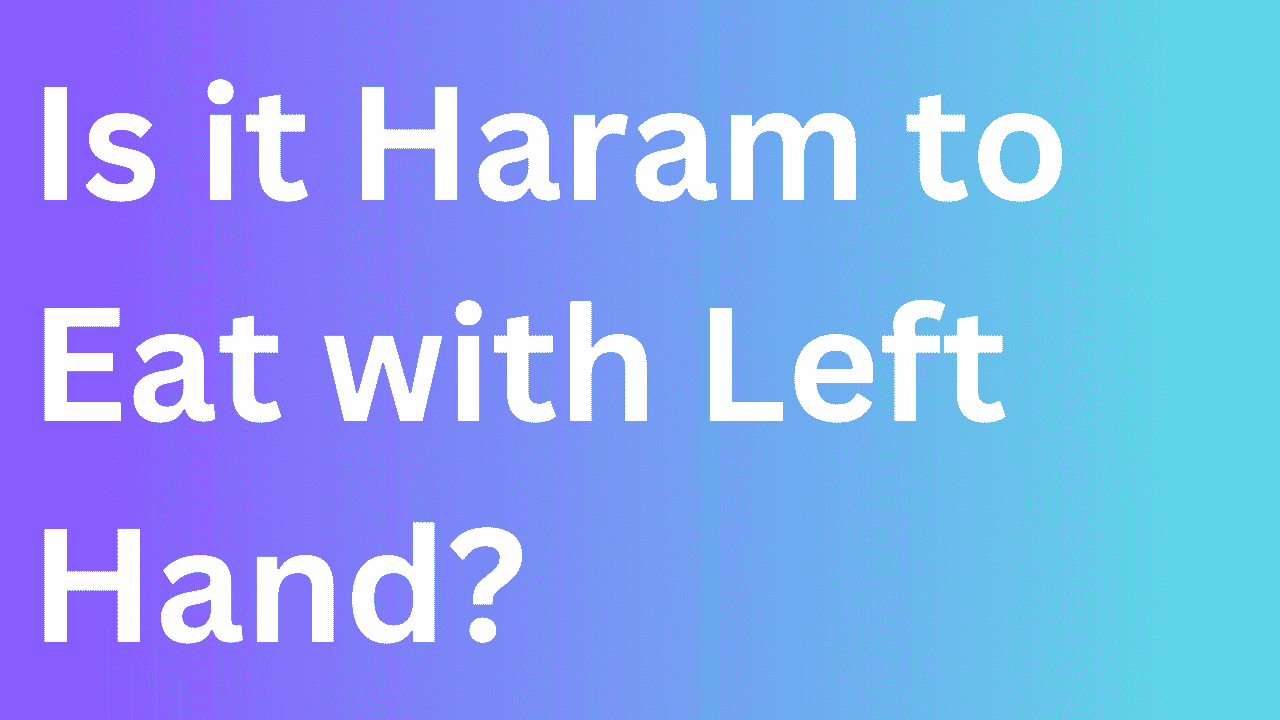Is it Haram to Eat with Left Hand? Unraveling Islamic Dietary Rules

Exploring the nuances of Islamic dietary customs unveils a rich tapestry of tradition and belief. One such inquiry pertains to the act of eating with the left hand—is it haram, or forbidden, in Islam? This article delves into the depths of this query, shedding light on the significance of this practice within Islamic teachings and its cultural resonance.
Understanding the Prohibition
Eating with the left hand is often discouraged in Islamic culture. This admonition stems from the belief that the left hand is considered impure due to its association with tasks deemed unclean. According to Islamic tradition, the left hand is reserved for personal hygiene activities, such as cleansing after using the restroom. Consequently, using it for eating is perceived as disrespectful and unhygienic.
Cultural Significance
Beyond religious doctrine, the preference for the right hand in Islamic dining etiquette extends to cultural norms as well. In many Muslim-majority countries, using the left hand during meals is viewed as a breach of social decorum. Individuals are taught from a young age to eat with their right hand as a sign of respect and adherence to tradition.
Historical Context
The aversion to eating with the left hand traces its origins back to ancient Arabia, where nomadic tribes valued cleanliness and purity. Given the scarcity of water in desert environments, preserving hygiene practices became paramount. Thus, the custom of using the right hand for eating emerged as a practical solution to maintain cleanliness and observe cultural norms.
Religious Implications
While not explicitly stated in the Quran, the tradition of eating with the right hand is upheld through Hadiths—narrations of the sayings and actions of Prophet Muhammad. Several Hadiths highlight the Prophet’s preference for using the right hand during meals, reinforcing the cultural and religious significance attached to this practice.
Dispelling Misconceptions
Despite the emphasis on using the right hand, it’s essential to approach this aspect of Islamic dietary rules with nuance. While eating with the left hand is discouraged, it does not inherently render the act haram or sinful. Rather, it is viewed as a matter of etiquette and cultural observance, varying in significance across different communities and regions.
Practical Applications
In contemporary times, the tradition of eating with the right hand persists, albeit with varying degrees of adherence. Individuals of Islamic faith often prioritize using the right hand during meals as a symbol of respect for tradition and religious teachings. However, cultural influences and personal habits may also shape individual practices regarding dining etiquette.
Addressing Common Concerns
Hygiene Considerations
Maintaining proper hygiene is paramount in Islamic teachings, and using the right hand for eating aligns with these principles. By segregating tasks associated with cleanliness and dining, individuals uphold standards of personal hygiene while honoring cultural norms.
Cultural Norms
In multicultural societies, understanding and respecting diverse customs and traditions are essential. While eating with the left hand may not carry the same stigma in non-Islamic cultures, individuals are encouraged to be mindful of etiquette and demonstrate sensitivity to cultural practices.
Religious Observance
For devout Muslims, adhering to dietary guidelines and customs is an integral aspect of religious observance. While the prohibition against eating with the left hand may not be explicitly mandated, it reflects a broader commitment to upholding Islamic principles in daily life.
Social Etiquette
Observing proper dining etiquette is not only a religious obligation but also a reflection of one’s upbringing and social etiquette. By embracing cultural practices such as using the right hand for eating, individuals foster a sense of unity and respect within their communities.
Individual Choice
Ultimately, the decision to adhere to specific dietary customs, including using the right hand for eating, rests with individual beliefs and convictions. While tradition and religious teachings provide guidance, personal discretion and cultural context play significant roles in shaping dining habits.
Respect for Tradition
Regardless of personal preferences or cultural background, demonstrating respect for tradition and cultural practices fosters harmony and understanding among diverse communities. By embracing customs such as using the right hand for eating, individuals contribute to the preservation of cultural heritage and religious identity.
Conclusion
In the tapestry of Islamic dietary rules, the question of whether it is haram to eat with the left hand reveals a complex interplay of tradition, religion, and cultural norms. While the preference for using the right hand is deeply ingrained in Islamic teachings and cultural practices, it is essential to approach this issue with understanding and respect for diverse interpretations. Ultimately, dining etiquette serves as a reflection of individual beliefs and cultural heritage, enriching the tapestry of human experience.
